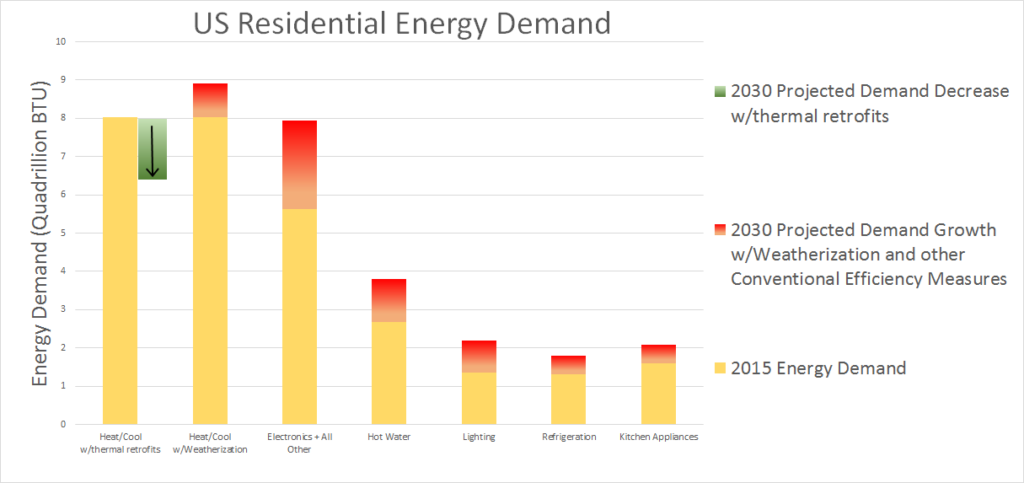Although emission tonnage dropped with the onset of Covid, atmospheric pollution hasn’t noticed the pandemic. The annual increase in parts per million over the past 60 years is about 100 times faster than previous natural increases. When continuous observations began at Mauna Loa in 1958, this primary climate indicator was only 315 ppm, compared to 419 ppm in May, 2021. This trend suggests that the possibility of a 1.5* C warming peak may have passed.
| Average Atmospheric CO2 Growth Rate Per Year | |||||
| 2010-19 | 2000-09 | 1990-99 | 1980-89 | 1970-79 | 1960-69 |
| 2.40 ppm | 1.97 ppm | 1.50 ppm | 1.61 ppm | 1.28 ppm | 0.85 ppm |
According to the World Meteorological Organization’s recent State of the Global Climate report, 2020 was a continuation of expanding climate impact: “the global average temperature in 2020 was about 1.2° C above pre-industrial level”. Record-breaking weather and temperatures have become regular news. Mixed with devastation from Hurricane Ida, New York City experienced the most significant flash-flooding disaster in the city’s history. Along with mitigation and adaptation, emergency response is an escalating cost of climate.
The Biden administration set robust climate goals and a $14 billion budget for emission reduction and clean (renewables + nuclear) electricity. Without adequate support from Democrats, the administration will have to accept a lower budget and more conventional measures like tax credits and regulation to launch the energy transition. Aside from the political pendulum, future demand for electricity is certain to rise faster with EV’s, building electrification, and renewable energy for new end-uses such as space heating, space cooling, water heating and process heat.
To meet the Biden 2030 goals, the US must cut emissions 2160 MMt (from 5160 MMt in 2020) down to 3000 MMt by 2030. Also, electricity (4100 TWh in 2020) must increase clean generation from 1700 TWh in 2020 (40%) to 3700 TWh: this requires at least 2000 new TWh to be on the grid in 8 years.
A clean electricity future requires widespread replacement of fossil fuel generating facilities with solar and wind farms. A logical start would be to close all coal plants, which produce 3 to 5 times more emissions per TWh than natural gas. Although half of the 500 US coal plants are on track for closure, the rest are essential to supply today’s grid. Even if all coal plants were closed by 2030, the reduced emissions would provide less than half of the 2160 MMt needed.
In 2020, coal generated 23% of the electricity supply, about 950 TWh. In contrast, solar provided only 2.3% (95 TWh) of the 2020 supply. Even if 950 TWh of solar could be financed, construction would require over a million acres (4 times the size of Los Angeles) and nearly a billion panels. A 23% solar grid cannot be built in 8 years, and it would only provide half of the 2000 TWh of new clean electricity needed for the 2030 goal. If wind was assigned to provide the other 1000 TWh, current generation of 340 TWh from 65,000 turbines would have to triple with 130,000 new turbines.
Because emissions and energy demand are too high, and clean energy powers only 40% of the grid, Biden’s 2030 goals cannot be achieved with existing decarbonization measures. A clean energy future also requires belt-tightening on the demand side. One untapped option is to improve residential thermal performance. On average, more than half of a US household’s annual energy consumption is for space heating and air conditioning. Much of this is lost via thermal leakage.

infrared photo
No other use of energy is this wasteful: once the thermostat is set, few give much thought to their thermal shell.
A typical house needs to be reheated every 6 minutes, compared to every 60 minutes for a thoroughly sealed home, such as an Airtight House from Passivhaus (http://www.passivehousesolutions.ie/air-tightness-testing-2/). Good thermal performance has been widely demonstrated in “zero energy ready” (https://www.energy.gov/eere/buildings/zero-energy-ready-homes ) and “zero net energy” ( https://www.cpuc.ca.gov/industries-and-topics/electrical-energy/demand-side-management/energy-efficiency/zero-net-energy ) new construction. Although uncommon, proven thermal systems can also be installed on existing homes.
The emphasis of more than 600 utility efficiency programs is promoting high efficiency products (such as EnergyStar) rather than targeting thermal leakage. Residential demand trends show that thermal efficiency is the only option for pulling excessive demand into better balance with a clean supply.

Fortunately, local contractors can use commercially-available products to eliminate wasted energy. Thermal retrofits are labor-intensive, producing at least $5000 in local payroll per project. More than 100 million US homes would significantly benefit from upgraded thermal performance.
A continuous thermal seal cuts energy consumption by at least 5000 KWh (17 million BTU) every year for the average home’s long life. The reduced energy demand can be measured and monetized with home performance scoring, such as the RESNET HERS index (https://www.resnet.us/hers-index), which has been used for post-construction evaluation on more than 2 million homes.
Eliminating thermal leakage is an over-looked opportunity for utilities to decarbonize and create unsubsidized jobs. Space conditioning energy drives up a utility’s peak demand expense, when energy cost can be double. At the right price, a utility could buy demand reduction from local contractors rather than more energy. Because a retrofit relates to the home rather than the occupant, thermal retrofits can be offered inclusively to all customers without new expense. Improved dwelling comfort, value and resilience are additional benefits of “thermal optimization”, introduced in this 2016 Climate Institute (www.climate.org/wp-content/uploads/2016/06/Thermal-Optimization.pdf) report.
The price of a retrofit depends on location and techniques, and the level of performance chosen by the utility: feasibility of utility-financed thermal retrofits is locally determined. Community leaders everywhere can encourage building contractors to engage energy suppliers about measurable demand reduction, and the potential for new local jobs.





